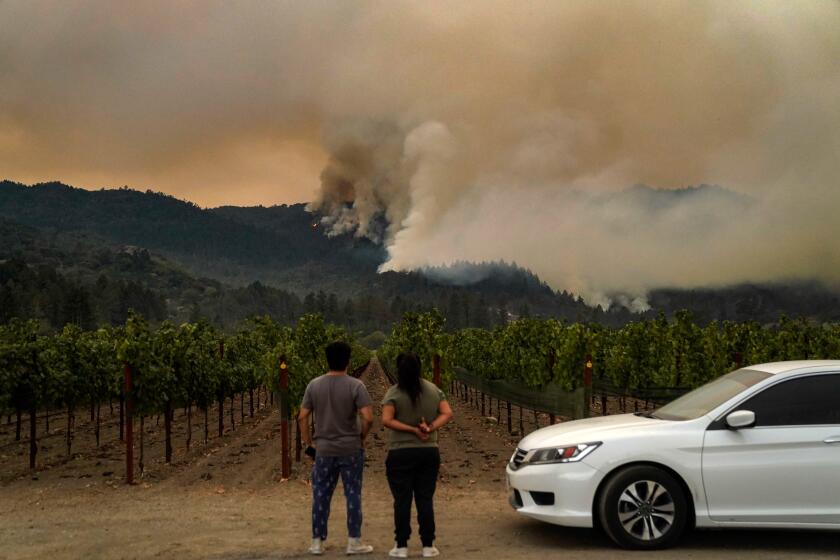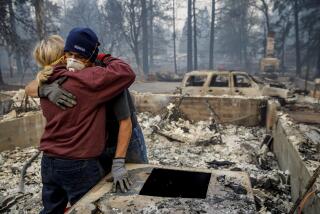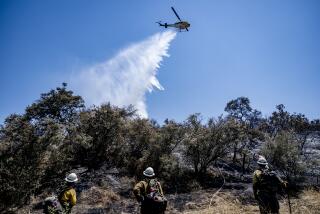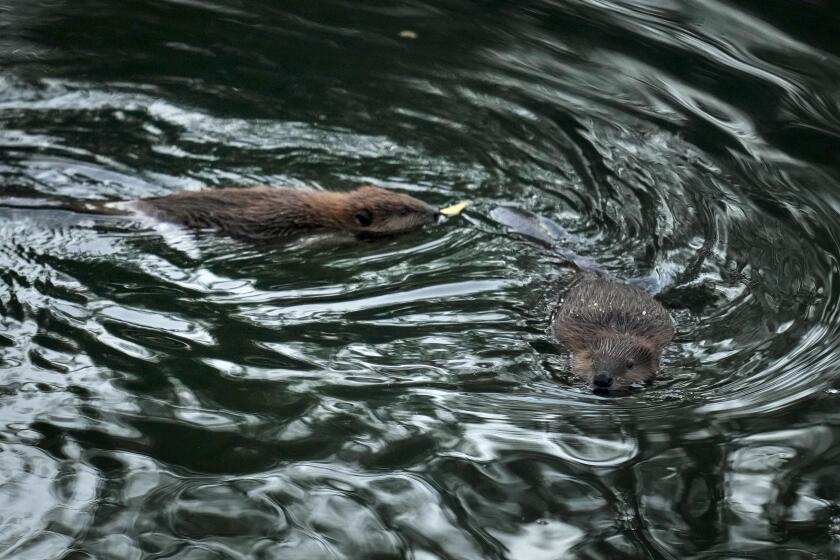They sounded the alarm about Northern California’s wildfire risks, but little help arrived

The warnings were there in black and white less than a year after the Camp fire killed 85 people in their homes and driveways and on the road.
To avoid the next Paradise, a grand jury warned, Butte County needed to reduce its wildfire risks. That included identifying key evacuation routes and reducing grass, brush and timber fuel.
“Other foothill communities such as ... Berry Creek ... although sparsely populated, are even more vulnerable,” the report warned. “This is due to narrow, one-way-in and -out roads overgrown with heavy vegetation. If any of these roads were to become impassible, the loss of life could be substantial.”
But before all the necessary work was done, fire returned to Butte County.
On the morning of Sept. 8, two remote fires converged above the middle fork of the Feather River in Plumas County. Flames raced down the steep canyon walls and jumped the water, igniting a ferocious crown fire on the opposite side.
The blaze rolled southwest like a wave, as canyon-funneled winds launched red-hot firebrands ahead of it, preheating its path. The fire overtook Berry Creek that night and killed 15 people in the county overall, many of them in the rural town as they tried to escape.
This was a chapter in the county’s fire history that Berry Creek resident Denise Bethune had hoped would end differently.
“I’ve been working on trying to make this not happen for a year and a half,” said Bethune, 51. “I wasn’t fast enough. I didn’t get it done.”
As Californians reel from the state’s worst fire season on record, residents such as Bethune who have tried to reduce their community’s risks describe their efforts as an act of near-futility.
Neighbors can be uninterested or too busy to help, she said. Municipal coffers may be empty, and accessing state or federal grant dollars is a byzantine application process that sucks up any free time left after tending to work and family. California Department of Forestry and Fire Protection officials agree the process can take too long but blame it on environmental regulations, and experts say hundreds of groups will be vying for support in the coming years.
“We’ve been on this treadmill for a long time where we plan a project ... and the project burns up before we can start it,” said Calli-Jane DeAnda, executive director of the Butte County Fire Safe Council, which saw a planned fuel reduction project burn in the 2018 Camp fire. “It’s just tragic that we continue to allow this to happen.”
A timetable of official response shows authorities were slow to warn those downwind of the Bear fire of the firestorm firefighters knew was likely.
Ten acres of land brushing up against the California wild was what lured Bethune and her family from the city of Citrus Heights, near Sacramento, to the small town of Berry Creek.
“It’s probably the best move we ever made,” Bethune said. “The people are real. It’s a different way of life.”
That changed dramatically two years ago, however, when the Camp fire erupted two miles away and shook Bethune to the core. If the winds that were funneled through the Sierra that morning had blown south instead of north, she reasoned, it would’ve been Berry Creek that suffered, not Paradise.
As soon as the Butte County Grand Jury released its findings on what could be done to avoid another disaster, Bethune went to work.
“I’ve gone to politicians, I’ve gone to scientists.... I went to [state Sen. Jim] Nielsen with the grand jury report — I took that to him too — and I had outlined and noted everything,” she said. “Everything I outlined I said, ‘This is what we need in Berry Creek.’”
But little help materialized, residents say, although some acknowledge that the Camp fire decimated the county’s tax base and triggered turnover among its staff.
Two years ago, the state approved a grant for more than $800,000 to reduce vegetation along Berry Creek’s main roads, but the work was never completed because it was slowed down, in part, by California’s environmental approval process, said U.S. Rep. Doug LaMalfa (R-Richvale), whose district includes Paradise and Berry Creek.
“We’re not talking rocket science here,” the congressman said. “The work the fire safe council does is pretty straightforward around roadways and communities. It shouldn’t have to be a scientific discovery of the atom every time you want to get this done.”
In 2019, Cal Fire completed 35 fuel-mitigation projects around vulnerable towns and evacuation routes, aided by a streamlined environmental approval process with the state Natural Resources Agency. One of those was in Butte County near Oroville, where the North Complex fire reached. “I saw a couple houses that definitely got saved. They’re pretty happy they put that there,” said Dave Derby, a forester in Cal Fire’s Butte County unit.
Bethune, meanwhile, recalled hounding state and local officials for two months just to find out who was responsible for managing the area around the one road in and out of town, Oro Quincy Highway. It turned out to be a county responsibility.
“I did what I could. It never got done,” Bethune said. “They mowed the blackberries on the sides, for God’s sake.”
In February, Butte County Public Works announced a fuel mitigation project for Oro Quincy Highway once again, and Bald Rock and Zink roads, which are used by locals. Bethune said that work was also never done.
“From the standpoint of ingress egress, it would’ve helped,” Derby said of the projects. “But when you have a wind-driven fire, even a 600-foot fuel break doesn’t mean much.”
One of the fire’s victims — a teen holding his dog — was found along Oro Quincy Highway. Eight others died in or near homes off Bald Rock Road, according to locations of the dead provided by the Butte County Sheriff’s Office.
Repeated requests by The Times for comment from the county public works department went unanswered.
Although Cal Fire has allocated millions of dollars to Butte County to reduce its fire risks since the Camp fire, none of those dollars flowed to work in Berry Creek.
“Throughout my career, the big communities sop up all the money,” said Nielsen (R-Tehama), who recommended the federal government contribute more. “The greatest weight should be on the local citizenry ... as to where resources should be deployed.”
Because no one can predict where and when a wildfire will start, treating fuels around one community and not another is really an act of speculation, Derby said. There’s too much overgrown forest to get it all, it grows back too fast and the environmental regulations to treat it often take too long to get approved, he added.
“Welcome to my world,” Derby said. “It’s not just the fire safe councils. I oversee vegetation management for the Butte unit and we put together ... prescribed fire projects, and I’ve had a few of them burn up before I could get to them.”
For its part, the U.S. Forest Service too has struggled to fund its own forest management projects and has a backlog of millions of acres of mitigation work, including federal lands in California.
In the absence of government leadership, Bethune and her peers on the local fire safe council — a group of preparation-minded volunteers — have struggled to protect their homes from fire.
An attempt to designate local block captains to keep neighbors informed during emergencies lost momentum when COVID-19 hit, members said. When the fire safe council couldn’t find funding to purchase communications equipment — a recommendation from the grand jury — Bethune joined a Community Emergency Response Team training course.
Funding for that equipment was in the process of being obtained last month, but the fire arrived first.
“It’s just frustrating when you know what needs to happen, but it’s not a rich area, per se,” Bethune said. “With the population, we’re pretty low income, and we don’t get the attention.”
The North Complex fire killed this rancher’s herd of cattle, and five generations of a family legacy. He blames forest management, climate change and the politics of division.
About 100 miles to the southwest in Santa Rosa, a Sonoma County grand jury discussed the vulnerability of its high-risk communities after the wine country fires in 2017.
And just like Berry Creek, a handful of motivated residents took those concerns to heart and pressed for action.
In this case, it was the Upper Mark West Fire Safe Council, which had gotten the funding — but not yet completed the plans — for a small local fuel break to protect neighborhood homes. It burned. An earlier request to fund seven miles of fuel reduction along St. Helena Road, where homes were lost to the Glass fire last month, was turned down.
“Unfortunately, Mother Nature just did that fire break for us,” said Lynn Garric, a member of the council.
Garric has lived in unincorporated Sonoma County outside Santa Rosa since 1974, but she didn’t feel truly vulnerable to wildfire until 2015, when the deadly Lake fire destroyed almost 1,300 homes and sent smoke south into Garric’s neighborhood.
“It really showed us what could happen if we weren’t prepared better, so that really spurred us forward,” she said.
But attempts to secure funding have been challenging, in part because of Cal Fire’s less-than-clear guidance, she said. When Garric has applied for federal program and grant funding in her regular job, the agencies allocating the money usually provide a scoring rubric with their rejection notices, giving the applicant some sense of how to improve the application next time.
But Cal Fire offers no such explanation when it turns down a project, Garric said, leaving residents in the dark as to how to improve their chances.
The current model isn’t doing enough to help rural Californians protect themselves, said Sonoma County Supervisor Susan Gorin, whose district was hit by the Glass fire and who lost her own home in the 2017 Tubbs fire.
“They develop a wildfire protection plan that prioritizes vegetation management, and they can get no funding for them,” Gorin said. “The funding we have statewide is really inadequate to meet the needs of even dedicated homeowners, and that’s absolutely what we need to work on.”
Once again, wind-driven flames tear through Santa Rosa, as wildfires besiege California’s wine country.
If Californians want to get ahead of the increasing wildfire threat, they’re going to have to spend the money before disaster strikes, said DeAnda, the Butte County Fire Safe Council executive director.
“We know what needs to happen, and we have the people who are willing to do it. We need a greater number alongside us to help,” DeAnda said. “I think the state has been awakened. We really can make a difference. And we really do need to invest in these rural areas.”
More to Read
Start your day right
Sign up for Essential California for news, features and recommendations from the L.A. Times and beyond in your inbox six days a week.
You may occasionally receive promotional content from the Los Angeles Times.









